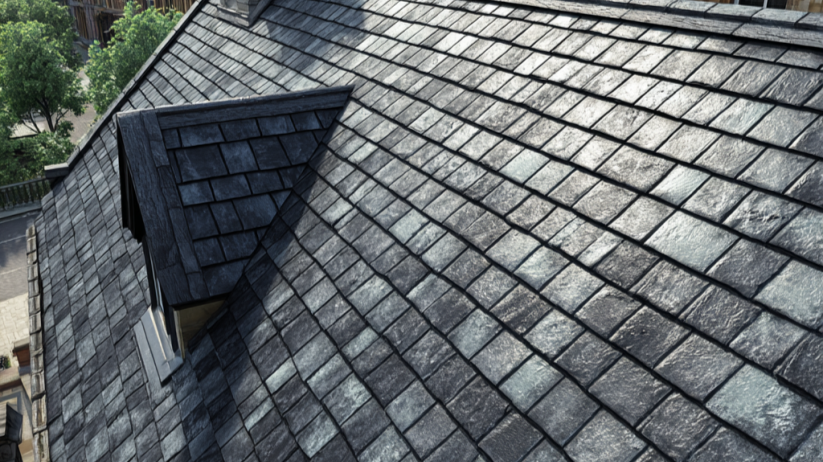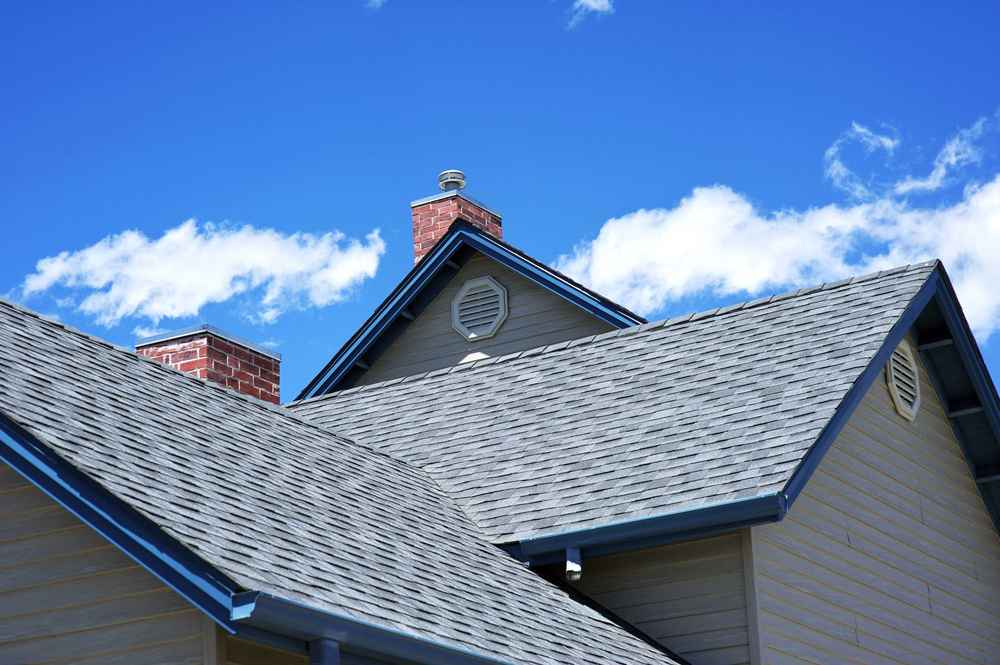Ohio homeowners face a big question when planning a roof replacement: What is the best roofing material for long-term value? With hot summers, cold snowy winters, and unpredictable storms, the choice isn’t just about looks; it’s about performance and cost-effectiveness.
Your roof is a major investment, and knowing which roofing materials hold up best in Ohio’s climate will save you money and stress in the long run.
In this guide, you’ll learn:
- Which roofing types deliver the best balance of cost and durability
- How warranties and maintenance affect long-term value
- Why installation quality and the number of layers already on your roof matter
- How to confidently decide on the right roof material for your home
When you’re ready to explore your options, Raw Roofing Solutions is here to help with expert recommendations and free inspections.
Breaking Down Roofing Materials for Ohio Homes
Ohio’s four-season climate puts unique demands on a roof. The best roofing materials must endure heat waves, ice dams, heavy snow loads, and high winds. Not every product performs equally well, which is why cost-effectiveness isn’t just about the price tag; it’s about balancing upfront costs with long-term performance.

Asphalt Shingles
Asphalt shingles remain the most common roof material in Ohio because of their affordability and versatility. They typically last 20–30 years and are available in three main styles:
- Standard (3-tab)
- Architectural (dimensional)
- Luxury
Asphalt is budget-friendly, comes in a wide range of colors, and provides dependable protection, though it may require more frequent replacement compared to premium options.
Synthetic Roofing Materials
Synthetic roofing materials, such as slate, tile, or cedar alternatives, offer the beauty of natural products without the same weight or upkeep. While they cost more upfront, they provide long lifespans of 40–50 years and often come with strong manufacturer warranties.
They’re impact-resistant, durable in Ohio’s freeze-thaw cycles, and energy-efficient, making them a smart long-term investment for homeowners planning to stay in their homes for decades.
Flat Roofing Systems
Flat roofing systems are most common on low-slope residential or garage structures. Options like modified bitumen or rubber membranes are affordable and quick to install, but they typically last only 10–20 years. They can be cost-effective for smaller buildings, though they require careful drainage design to avoid ponding water and premature wear.
Every option has trade-offs in cost, curb appeal, maintenance, and warranty protection. For Ohio homeowners, the most cost-effective choice often depends on how many years they plan to stay in their home and how many layers of materials their roof currently has, since multiple layers may require a full tear-off before installing new materials.
Important Factors to Consider Before Choosing Roofing Materials
When deciding on the right roof material, keep these key points in mind.
Budget
What can you afford now vs. later?
Standard asphalt shingles cost less upfront (~$20,000 for a full roof), but premium synthetics may pay off over decades.
Longevity
How long do you want your roof to last?
Asphalt shingles last 20–30 years. Synthetics and luxury options can extend 40–50 years with minimal maintenance.
Maintenance
How much work are you willing to do?
Asphalt requires occasional replacement of damaged shingles. Synthetic products resist mold, algae, and impact damage, lowering upkeep costs.
Warranties
What’s covered?
Asphalt shingles often carry 50-year manufacturer warranties. Synthetics offer the same, with lifetime workmanship warranties.
Layers
How many layers of material does your roof currently have?
If more than one, a tear-off may be required before adding new materials, increasing labor costs.
Energy Efficiency
Will the material save you money on utilities?
Reflective synthetics and lighter-colored asphalt help reduce cooling costs in Ohio summers.
Asking these questions before committing ensures you choose the material that truly delivers cost-effectiveness for your situation.
Comparing Popular Roofing Materials in Ohio
| Roof Material | Avg Cost | Lifespan | Manufacturer Warranty | Workmanship Warranty | Best For |
|---|---|---|---|---|---|
| Asphalt Shingles | $20,000 | 20–30 yrs | 50 yrs | Lifetime | Budget-conscious, versatile styles |
| Architectural Asphalt | $20,000 | 25–40 yrs | 50 yrs | Lifetime | Mid-range homes, durability |
| Luxury Asphalt | $32,000 | 30–50 yrs | 50 yrs | Lifetime | High-end appearance on budget |
| Synthetic Slate/Tile/Cedar/Shingle | $40,000 | 40–50 yrs | 50 yrs | Lifetime | Long-term value, premium style |
| Flat Roofing | $20,000 | 10–20 yrs | 15 yrs | Lifetime | Low-slope roofs, garages |
Key Takeaways- Asphalt shingles are the lowest cost but may need 2–3 replacements over the lifespan of one synthetic roof.
- Synthetics require higher upfront investment but deliver outstanding durability and style.
- Flat roofing is cost-effective for smaller or low-slope structures but less ideal for long-term residential value.
Expert Insights on Roofing Materials in Ohio
Choosing the right roof goes beyond upfront cost; it’s about how well it performs in Ohio’s challenging climate and how long it protects your home. Here are some expert insights on the factors that matter most when comparing roofing materials.
Durability and Climate Resistance
Ohio’s weather is unpredictable, with hot summers, icy winters, and frequent freeze-thaw cycles. Standard asphalt shingles can become brittle over time, especially after repeated cycles of expansion and contraction.
Synthetic roofing materials, like slate or tile alternatives, are engineered to flex with temperature swings, reducing the risk of cracks or premature aging. In areas prone to heavy snowfall, synthetic slate or tile sheds snow more easily than textured asphalt, lowering the risk of ice dams and excess weight stressing your roof structure.
Warranty Coverage Adds Value
When you’re comparing roofing materials, warranties should play a central role in your decision. Many asphalt shingles come with 25–50-year manufacturer warranties, but synthetic roofing often carries the same coverage, plus added impact resistance and algae protection. Pair that with a lifetime workmanship warranty from a certified installer, and you’re safeguarding not just the material itself, but also the way it was put on your home.
This layered protection ensures your roof investment won’t become a financial burden years down the line.
Energy and Environmental Impact
The right roof material can make a noticeable difference in energy bills. Light-colored asphalt shingles or reflective synthetic products reduce heat absorption, helping attics stay cooler during Ohio’s muggy summers.
Synthetic materials also offer eco-friendly benefits: many are made with recycled content and can be recycled again at the end of their life. By reducing the number of old shingles that end up in landfills, synthetic roofing supports sustainability while protecting your home.
Installation Quality Matters
Even the highest-rated roofing materials won’t perform if they’re installed incorrectly. Misaligned shingles, poor flashing, or improper ventilation design can shorten the life of your roof and void warranties.
That’s why certified roof installers matter; they follow manufacturer guidelines to the letter, ensuring that your roof qualifies for full warranty protection. Always ask how many layers of materials your roof currently has, since too many can require a tear-off for proper installation.
When evaluating what is the best roofing material for your Ohio home, you need to look beyond price. Climate performance, warranty strength, environmental benefits, and installation quality all combine to determine true long-term value.
Is Asphalt or Synthetic Roofing the Most Cost-Effective Choice?
If your goal is short- to mid-term value, asphalt shingles often make sense. They’re affordable, widely available, and suitable for homeowners who plan to stay in their house for 10–20 years. Architectural and luxury asphalt shingles also offer enhanced durability and style without a major cost jump.
However, if you’re planning to stay in your home for the long haul, or if you want maximum curb appeal, synthetic roofing is often the smarter investment. Though it comes with a higher upfront cost, its extended lifespan, resistance to Ohio’s tough climate, and reduced maintenance needs make it cost-effective over decades. Think of it as paying more now to avoid multiple replacements later.
Quick Recap:
- Asphalt shingles = best short-term savings
- Architectural asphalt = balance of cost and performance
- Synthetic roofing = best long-term value
- Flat roofing = only cost-effective for low-slope structures
By considering your timeline and how many layers of materials your roof currently has, you’ll know which option makes the most sense for your investment.

Roofing Materials FAQs
What Is the Best Roofing Material for Homes in Ohio?
The best roofing material depends on budget and plans. Asphalt shingles are most affordable; synthetics provide the longest-term value.
How Many Layers of Materials Does Your Roof Currently Have?
If your roof has multiple layers, a tear-off may be required before replacement. This affects both cost and timeline.
Are Asphalt Shingles Still the Most Popular Roof Material?
Yes. Asphalt shingles remain the most common due to affordability, variety, and solid warranties.
Do Synthetic Roofing Materials Really Last Longer?
Yes. Synthetic products like slate, tile, or cedar alternatives can last 40–50 years, double the lifespan of asphalt.
Which Roofing Materials Are Most Energy Efficient?
Metal and synthetic roofing with reflective surfaces is the most energy-efficient, helping lower summer cooling bills in Ohio.
Are Certain Roofing Materials Better for Snow and Ice in Ohio?
Yes. Synthetic slate and metal roofing materials shed heavy snow more easily than standard asphalt, reducing the risk of ice dams and roof stress.
How Many Layers of Materials Does Your Roof Currently Have, and Why Does It Matter?
If your roof already has two or more layers of materials, building codes may require a full tear-off before adding new shingles. This ensures proper installation and prevents excess weight on your home.
What Roofing Materials Offer the Best Curb Appeal?
Luxury asphalt shingles and synthetic slate are popular choices for homeowners wanting a high-end look. These roofing materials provide
Protect Your Home with the Right Roofing Material
Your roof is more than just shingles; it’s your home’s first defense against Ohio’s unpredictable climate. Choosing the most cost-effective roofing materials means balancing cost, durability, warranties, and the number of layers already on your roof.
Our certified team helps Ohio homeowners decide on the best option for their homes with free inspections, clear estimates, and lifetime workmanship warranties.
Don’t wait until leaks or storm damage force your hand. Schedule your free inspection today and let us help you find the right roof material to protect your home for decades.

